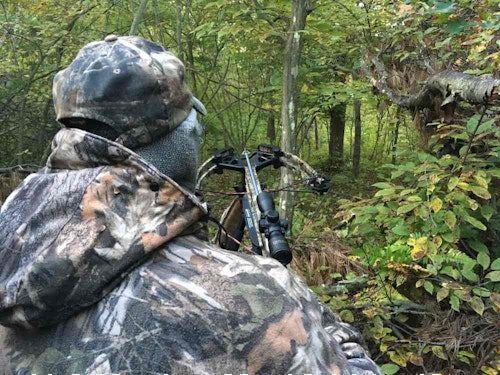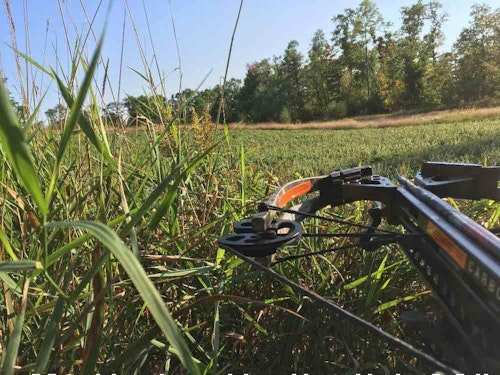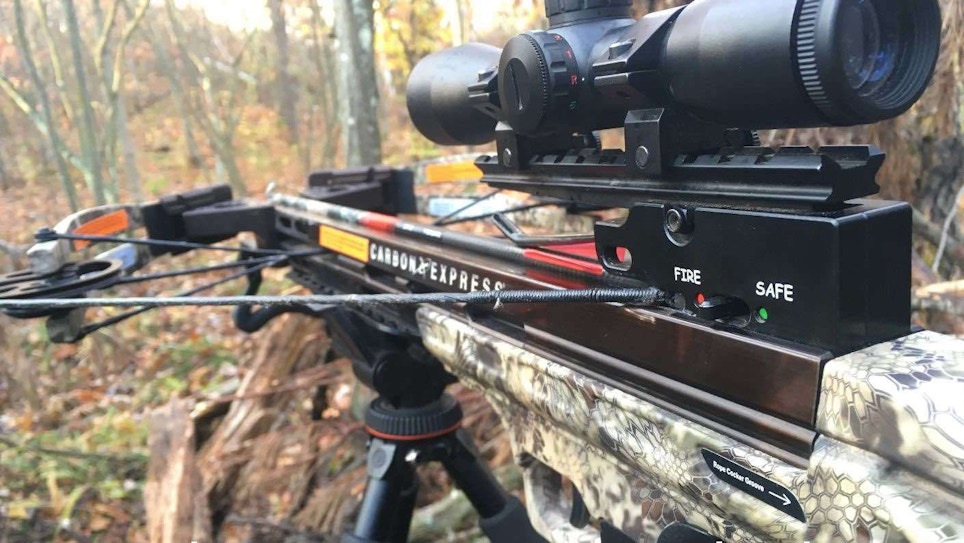I love a love/hate relationship with crossbows. Carrying them in the field is a challenge compared to a compound or traditional bow; shooting them accurately requires a monopod, bipod or tripod; and they can be cumbersome to use in a treestand (especially a group of trees) because you need clearance for the bow’s horizontal limbs.
However, the ability to shoot without having to draw back a bowstring during the moment of truth is a tremendous advantage in not being busted by a close-range deer, and when paired with a shooting rest, a crossbow is an incredibly accurate hunting tool. I can stack arrows with a compound bow, but there’s no question I’m more deadly when shooting a crossbow from a rock-solid rest.
Regardless of whether I’m hunting with a compound, recurve or crossbow, I plan for close-range shots. Although I practice at longer distances, I limit my in-the-field shot range with a compound and crossbow to 30 yards, and I won’t shoot beyond 15 yards with my recurve. As anyone who hunts with a vertical bow can attest, you have to draw the bowstring at the right time to avoid being busted by nearby deer. Draw too soon and you’re in trouble. Draw too late and a deer could spot your movement.
With a crossbow, if you wait too long to slip off the safety, a close-range deer could spot you move, or it could hear the metallic click of the safety sliding forward to the “fire” position. For that reason, I slip off a crossbow’s safety whenever I hear distance sounds that might be a whitetail. In addition, I slip off the safety during the prime 30 minutes at first light and last light, regardless of whether I have deer nearby. This is especially true during times in the whitetail woods when it’s dead quiet.

Am I being reckless in the woods to have my crossbow ready to fire (safety slipped off) even though I don’t have a deer in front of me? No.
I keep my finger away from the trigger, and my crossbow is pointed directly toward my primary shooting lane. The crossbow’s stock is touching my shoulder; I’m ready to shoot. If a deer appears, all I must do is track it with my eyes, decide whether I want to shoot, then slip my eye behind the scope, aim and squeeze the trigger.
When prime time comes to a close (morning or evening), I slip on the crossbow’s safety. Important note: I never walk around the woods with a crossbow if its safety is in the “fire” position.
In my opinion, it’s best to slip off a crossbow’s safety sooner rather than later. That way, a whitetail approaching your shooting lane will never know you’re hiding nearby.







